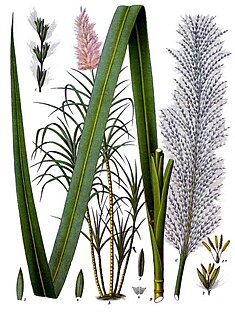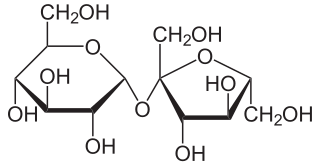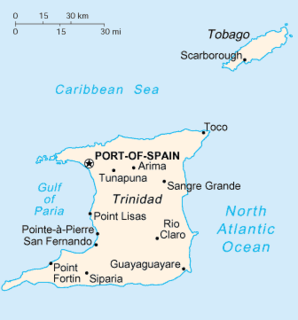The known history of Mauritius begins with its discovery by Arabs, followed by Europeans and its appearance on maps in the early 16th century. Mauritius was successively colonized by the Dutch, the French and the British, and became independent in 1968.
The culture of Mauritius involves the blending of several cultures from its history, as well as individual culture arising indigenously.

Sir Seewoosagur Ramgoolam was a Mauritian politician, statesman and philanthropist. He was a leader in the Mauritian independence movement, and served as the first Chief Minister and Prime Minister of Mauritius, as well as its Governor-General. He was the Chairperson of the Organisation of African Unity from 1976 to 1977. As the leader of the Labour Party, Ramgoolam fought for the rights of labourers and led Mauritius to independence in 1968.

Muscovado, also khandsari and khand, is a type of partially refined to unrefined sugar with a strong molasses content and flavour. It is technically considered either a non-centrifugal cane sugar or a centrifuged, partially refined sugar according to the process used by the manufacturer. Muscovado contains higher levels of various minerals than processed white sugar, and is considered by some to be healthier. Its main uses are in food and confectionery, and the manufacture of rum and other forms of alcohol. The largest producer and consumer of muscovado is India.
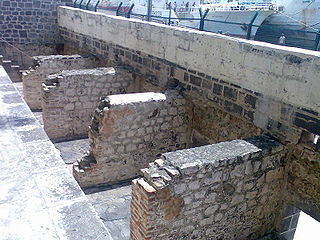
The Immigration Depot is a building complex located in Port Louis on the Indian Ocean island of Mauritius, the first British colony to receive indentured, or contracted, labour workforce from India. From 1849 to 1923, half a million Indian indentured labourers passed through the Immigration Depot, to be transported to plantations throughout the British Empire. The large-scale migration of the laborers left an indelible mark on the societies of many former British colonies, with Indians constituting a substantial proportion of their national populations. In Mauritius alone, 68 percent of the current total population is of Indian ancestry. The Immigration Depot has thus become an important reference point in the history and cultural identity of Mauritius.
Kisan Sangh was the first farmers' union formed in Fiji on 27 November 1937. This was the result of one man's determination to improve the plight of Fiji's Indian cane farmers. Ayodhya Prasad had arrived from India in 1929, and after a stint as a teacher took up cane farming and thus obtained firsthand experience of the problems faced by Fiji Indian cane farmers.
The Colonial Sugar Refining Company (CSR) began operations in Fiji in 1880 and until it ceased operations in 1973, had a considerable influence on the political and economic life of Fiji. Prior to its expansion to Fiji, the CSR was operating Sugar Refineries in Melbourne and Auckland. The decision to enter into the production of raw sugar and sugar cane plantation was due to the Company's desire to shield itself from fluctuations in the price of raw sugar needed to run its refining operations. In May 1880 Fiji's Colonial Secretary John Bates Thurston persuaded the Colonial Sugar Refining Company to extend their operations into Fiji by making available 2,000 acres (8 km²) of land to establish plantations.
The Federation of Cane Growers was formed as an umbrella organisation to negotiate the new cane contract due to take effect from 1960 with the Colonial Sugar Refining Company.
The National Farmers Union' (NFU) is one of Fiji's largest trade unions. It was launched in Labasa in July 1978 under the auspices of the Fiji Trades Union Congress, with Mahendra Chaudhry as its first General Secretary. The union was initially based in Vanua Levu but gradually extended its operations to Viti Levu.
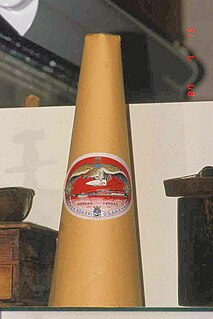
Sugar was first produced from sugarcane plants in northern India sometime after the first century CE. The derivation of the word “sugar” is thought to be from Sanskrit, and Sanskrit literature from ancient India, written between 1500 - 500 B.C. provides the first documentation of the cultivation of sugar cane and of the manufacture of sugar in the Bengal region of the Indian subcontinent. The Sanskrit name for a crudely made sugar substance was guda, meaning “to make into a ball or to conglomerate.”

Hacienda Mercedita was a 300-acre (120 ha) sugarcane plantation in Ponce, Puerto Rico, founded in 1861, by Juan Serrallés Colón. Today Hacienda Mercedita no longer grows sugarcane and its lands are instead used for growing mangoes, grasses, landscape plants and palms, coconut palms, bananas, and seeds.

British Mauritius was a British crown colony off the Southeast coast of Africa. Formerly part of the French colonial empire, the crown colony of Mauritius was established after a British invasion in 1810 and the subsequent Treaty of Paris that followed. British rule ended on 12 March 1968, when Mauritius became independent.
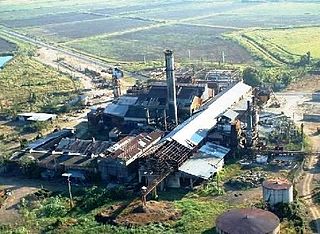
Central Coloso, also known as Coloso Sugar Cane Refinery, was a long-running sugarcane refinery in Aguada, Puerto Rico. The refinery was established in late 19th century becoming one of the biggest sugar emporiums in the island. It remained operational until 2003 becoming the last sugarcane refinery to cease operations on the island.
Sugar Cane Growers Cooperative of Florida is a vertically integrated agricultural enterprise that harvests, transports and processes sugarcane grown primarily in Palm Beach County, Florida and markets the raw sugar and blackstrap molasses through the Florida Sugar and Molasses Exchange. The Cooperative is made up of 45 grower-owners who produce sugarcane on approximately 70,000 acres of some of the most fertile farmland in America, located in the Everglades Agricultural Area (EAA). Sugarcane grown by Cooperative members is harvested, transported and processed. The raw sugar is then marketed to one of the ASR Group's sugar refineries. The Cooperative produces more than 350,000 tons of raw sugar annually.

The Truth and Justice Commission of Mauritius was an independent truth commission established in 2009, which explored the impact of slavery and indentured servitude in Mauritius. The Commission was tasked to investigate the dispossession of land, and “determine appropriate measures to be extended to descendants of slaves and indentured laborers.” It was “unique in that it [dealt] with socio-economic class abuses" and explored the possibility of reparations. The inclusion of reparations, whether for individuals or communities, was a controversial decision within the country which aimed to correct inequality. The Commission attempted to cover more than 370 years, the longest period of time that a truth commission has ever covered.




